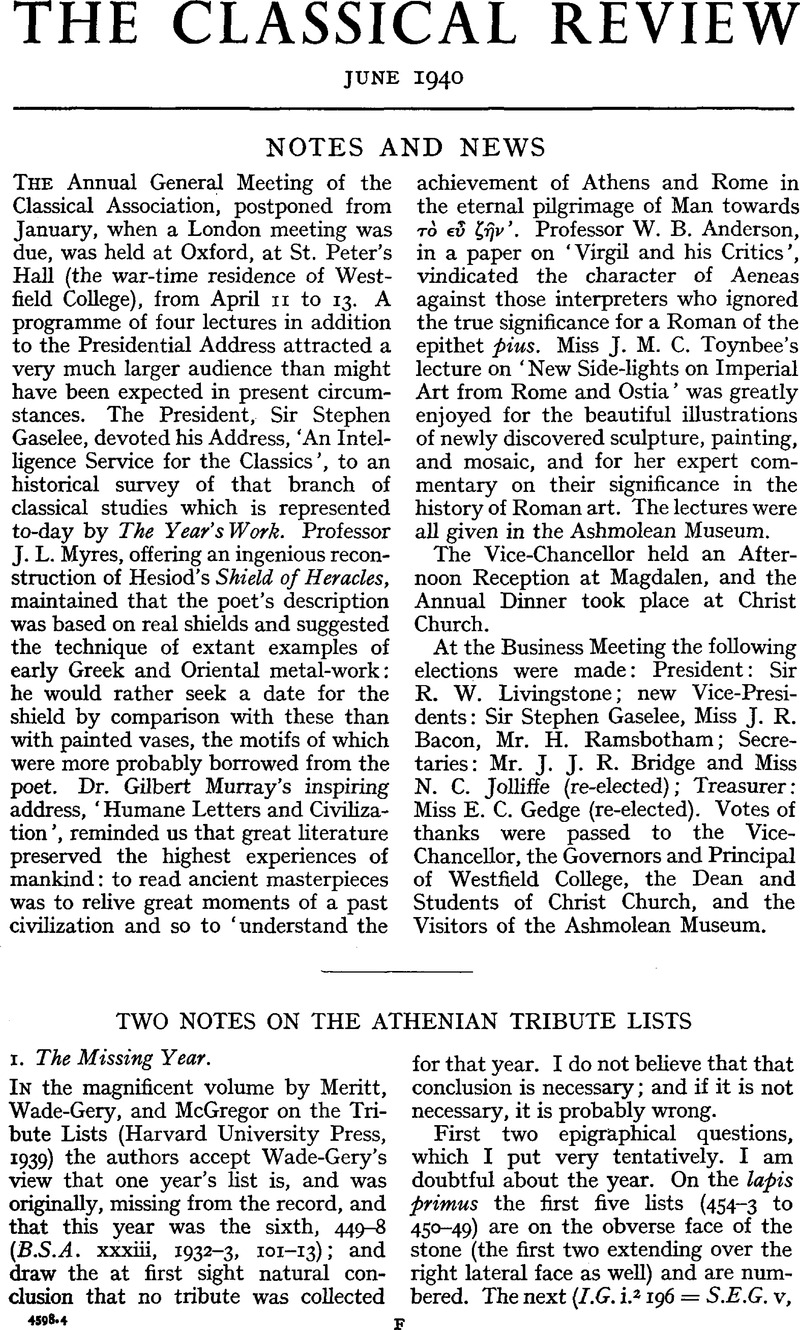No CrossRef data available.
Published online by Cambridge University Press: 27 October 2009

page 66 note 1 I.G. i.2 372.2. Probably ![]() , formed like ‘
, formed like ‘![]() not
not ![]() or
or ![]() (so v. Hiller, and Wade-Gery in a letter).
(so v. Hiller, and Wade-Gery in a letter).
page 66 note 2 A rough calculation from the facsimile drawing in Athenian Tribute Lists, pi. 9. See Wade-Gery, l.c. pp. 102–4 and Meritt, , A. J. A. 33, 1929, pp. 379–381, for the relative position of year 9 on the stone; it is not fixed within a line or two.Google Scholar
page 67 note 1 There is of course this further possibility: that the whole of the record of year 8 was at the top of the reverse face, occupying only 9 or 10 lines if we allow for the prescript; which would mean that not more than one-third of the cities paid tribute in 447–6, after the Athenian defeat in Boeotia. (Compare the old short list of year 7, as given in I.G. i2 and S.E.G. ν, before Wade-Gery's discovery that the records of years 1 and 2 extended over the right lateral face of the stone.)
page 68 note 2 We may add that they are (of course) used officially in the assessment decree of 425 B.C., I.G. i2.63.
page 69 note 1 Five of the seven appear in the lists for the first time in 434–3; two, Pharbelioi and Chedrolioi, had apparently been payang regularly since 454 Both of these appear as άтακтоί (Chedrolioi by a probable restoration) in 435–4. The reason for the new method of assessment (or for the new formula in the lists) in these two cases is quite obscure, and is certainly not explicable on the ![]() theory. It may be noted that Pharbelioi in 434/3, when they ‘themselves assessed the phoros’, paid half as much as they had been paying (8½ dr. quota instead of 16⅔), Chedrolioi twice as much (I6⅔ dr. instead of 8⅓ dr.); these are little things it is idle to try to explain. One of these small states, Pleumes, avoided payment in 433/2 as well. We do not know the reason for that either.
theory. It may be noted that Pharbelioi in 434/3, when they ‘themselves assessed the phoros’, paid half as much as they had been paying (8½ dr. quota instead of 16⅔), Chedrolioi twice as much (I6⅔ dr. instead of 8⅓ dr.); these are little things it is idle to try to explain. One of these small states, Pleumes, avoided payment in 433/2 as well. We do not know the reason for that either.
page 69 note 2 At the same time, note that five years elapsed between the war with Samos and the ![]() of Amorgos.
of Amorgos.